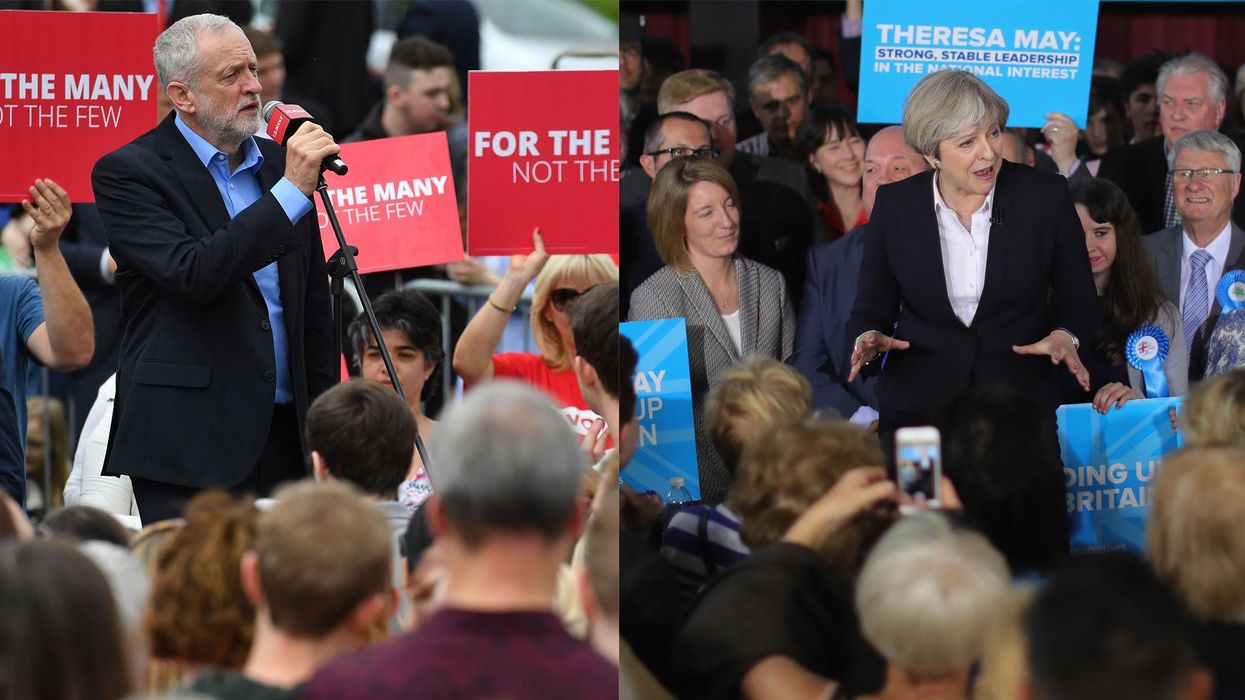News
Bridie Pearson-Jones
Jun 02, 2017

Picture:
BEN STANSALL/AFP/ Christopher Furlong/Getty Images
With the election a matter of days away have you ever wondered how alike who you're voting for is to you?
Digital marketing company, the Reckless Agency, have complied data to show where each (previously voted) MP is from, where they went to school and how their party fares when it comes to gender equality.
Note that there aren't currently any MPs due to the dissolution of Parliament, so this refers to former MPs (A large number of them are hoping to remain MPs after Thursday's election).
Educational background
While only 7 per cent of the public is privately educated, 28 per cent of those in Parliament are.
Breaking this down by party, of all the major parties the Conservatives have highest number of those privately educated (46 per cent), followed by Labour (14 per cent) and the Lib Dems (12.5 per cent). Of all SNP politicians, only 3.7 per cent were privately educated.
Looking historically at Prime Ministers, the figures are even more bleak, 41 were privately educated, equating to 79 per cent overall. Only 3 went to state comprehensive schools.
30 Prime Ministers (61 per cent), went to one of three elite public schools (Eton, Harrow, and Westminster).
Where were they born?
30 of the MPs at the dissolution of Parliament were born outside the UK, 24 were born in Northern Ireland, 77 were born in Scotland, and 39 in Wales.
London is the most common birthplace for MPs, followed by Glasgow, Liverpool and Edinburgh.
Regionally, the majority were born in the South, with only 9 per cent being born in the Midlands.
Of the previous Prime Ministers, the most were born in London.
How 'local' is your MP?
Even discounting those who were born aboard, on average, MPs live hundreds of miles from the constituencies they were born in.
142 MPs (22 per cent), represent constituencies they were born in.
Out of the Conservative, Labour and Liberal Democrat parties, Labour MPs are born nearest to their constituency with an average distance of 87.92 miles. The least local party are the Liberal Democrats, with MPs an average distance of 146.84 miles from birthplace to constituency.
Gender balance
About a third of MPs overall are women. Of the four biggest parties, Labour are the most equal with 56 per cent male, and 44 per cent female. The SNP are split 69 per cent male and 31 per cent female and the Conservative party only have 20 per cent female MPs.
Before the Richmond Park by-election in December, the Lib Dems didn't have any female MPs, they now have one (10 per cent).
Top 100
The Conversation (0)












